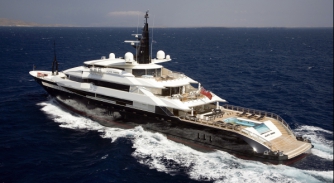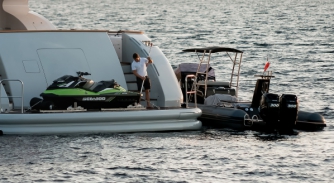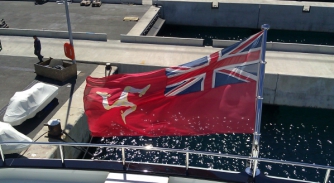Captain salaries on the rise
Quay Crew’s most detailed salary report to date reveals a rise in captains’ wages following a slight decline in recent years, amongst other findings…

After a slight decline in recent years, Captain salaries are back on the rise according to findings in Quay Crew’s Captain Salary Report 2023. The detailed report also highlights how the growth of the industry is affecting Captaincy appointments, an increase in competition for placements, and a need for a more structured pay rise structure to foster longevity.
Around 300 Captains responded to the survey across a range of yacht sizes from sub-30 metres to 100 metres plus. In addition to average pay and leave, pay rise and bonus activity, the 21-page report also compares Captain and Chief Officer experience, ticket level, longevity onboard, and comparisons to Quay Crew’s 2020 and 2022 survey findings.
“In our most detailed salary report to date, we have gained an insight into the real-time compensation Captains receive, broken down by yacht size and with several other comparables too,” says Simon Ladbrooke, Captain Consultant at Quay Crew. “A key takeaway this year is that, despite a slight decline in salaries between 2020 and 2022, the average monthly pay is now higher across all size brackets, representing a median 6.75% increase.”
The exact figures, as per the survey findings, illustrate an average monthly salary of €16,243, with €17,105 and €15,518 accounting for the salary of private and charter Captains respectively. In the 100-metre-plus segment, salaries stand at around €20,000 for both private and charter, a €3,500 jump from the 90-99 metre category. At the other end of the scale, wages range between €14,251 to €12,399, which is around €3,000 more than on board sub-39 metre yachts
Time for time rotation has also grown in popularity on all-sized yachts, with the exception of yachts under 39 metres, which are all full-time at present. Full rotation is also increasing and becoming more prevalent on sub-50 metres yachts, with an 11% decline overall in Captains with less than 59 days leave.
In terms of raises, Two-fifths of Captains receive an annual pay rise, although this is not part of their contract. A further 38% receive a 13th-month bonus, but random and unpredictable bonuses appear to be more commonplace across all segments.
Around 70% of Captains have a Master 3000 ticket but are operating on much smaller yachts. “We are increasingly seeing Captains with their Master 3000 taking time out to get their Marshall Islands Unlimited ticket,” adds Ladbrooke. “The most common reason for this is likely to be able to remain with their current employer who is going bigger.”
The survey data reveals the rapid growth of the superyacht sector as one of its primary observations. The average age at which individuals attain Captaincy for the first time has also increased to 32.5 years old and Chief Officers now accumulate more years of experience, indicating a prolonged transition.
“By gathering Chief Officer experience as well as longevity on their current yacht, we can surmise that onboard promotion is on the rise. The average age that someone becomes Captain is now older and the number of years of experience as Chief Officer is higher, suggesting the transition is also taking longer,” says Ladbrooke. This delay is likely influenced by heightened competition in the industry and increased difficulty in making the initial advancement.
Despite these challenges, nearly three-quarters (72%) of respondents claim it took them less than six months to secure their first Captain role, which is possibly attributed to onboard promotions and the substantial Chief Officer experience showcased in the survey. “We were very surprised at this statistic as it doesn’t match at all with our experience. Often, Chief Officers are looking for several years before they finally get their opportunity. It’s something we definitely want to explore further in another survey,” says Ladbrooke.
Additionally, more than half of respondents now receive business or first-class flights, dependent on flight duration, indicating a notable increase in this aspect. Flight allowance improves with yacht size, with 49% of Captains receiving Business Class flights as part of their package.
Looking at the overall average salary, Ladbrooke determines that they appear to be reasonable, though a smaller gap between private and private/charter incomes is anticipated. Being a charter Captain is acknowledged as very demanding, with the added complexity of handling various responsibilities, and fostering creativity and adaptability, all while maintaining crew motivation, despite the benefit of tips.
While positive, the frequency of pay raises and bonuses could benefit from a less arbitrary and discretionary approach to enhance Captain longevity. Exactly half of the Captains who responded have more than 10 years’ experience in the role and 32% were Chief Officers for three to five years prior. A third have been Captains on their current yacht for more than three years.
“The key takeaway for us is that, despite many of the respondents being experienced Captains, longevity does need to improve,” says Ladbrooke. “I’d expect at least three years on 60 metres plus yachts, while slightly less is acceptable on 40-59 metre boats as they are usually stepping stones to larger yachts.”
Ladbrooke adds that whilst every size bracket has great things going for it, more often than not, there is some kind of trade-off required. “This is not always a bad thing, and the fact that the market is moving in the right direction in almost every area, from leave and salary to bonuses and retention, sets a good precedent for the future of the sector.”
Profile links
NEW: Sign up for SuperyachtNewsweek!
Get the latest weekly news, in-depth reports, intelligence, and strategic insights, delivered directly from The Superyacht Group's editors and market analysts.
Stay at the forefront of the superyacht industry with SuperyachtNewsweek
Click here to become part of The Superyacht Group community, and join us in our mission to make this industry accessible to all, and prosperous for the long-term. We are offering access to the superyacht industry’s most comprehensive and longstanding archive of business-critical information, as well as a comprehensive, real-time superyacht fleet database, for just £10 per month, because we are One Industry with One Mission. Sign up here.
Related news

From Nero to Hero
A high court judge has ruled in favour of Nautilus’ claim, with more than a year’s wages set to be paid to the crew of Alfa Nero
Owner


Virsec launches lithium-ion safety course
In the wake of increasing fire rates derived from batteries, the eLearning security training specialists have curated a safety programme for crew
Crew

REG publishes revised Yacht Code
Released on 1 January, this revision from the Red Ensign Group represents the first major update since 2019
Business

Talking about our next generation
The problems of procuring and retaining new talent in the industry were painfully evident during Lürssen's TSF: Connect session
Crew

Chief Engineers in sufficient supply
Chief Engineers are enjoying a robust employment market with salaries and rotations moving further in line with expectations
Crew
Related news
From Nero to Hero
1 year ago
Comforts at the coalface
1 year ago
Virsec launches lithium-ion safety course
1 year ago
REG publishes revised Yacht Code
1 year ago
Talking about our next generation
1 year ago
Chief Engineers in sufficient supply
1 year ago
NEW: Sign up for
SuperyachtNewsweek!
Get the latest weekly news, in-depth reports, intelligence, and strategic insights, delivered directly from The Superyacht Group's editors and market analysts.
Stay at the forefront of the superyacht industry with SuperyachtNewsweek



